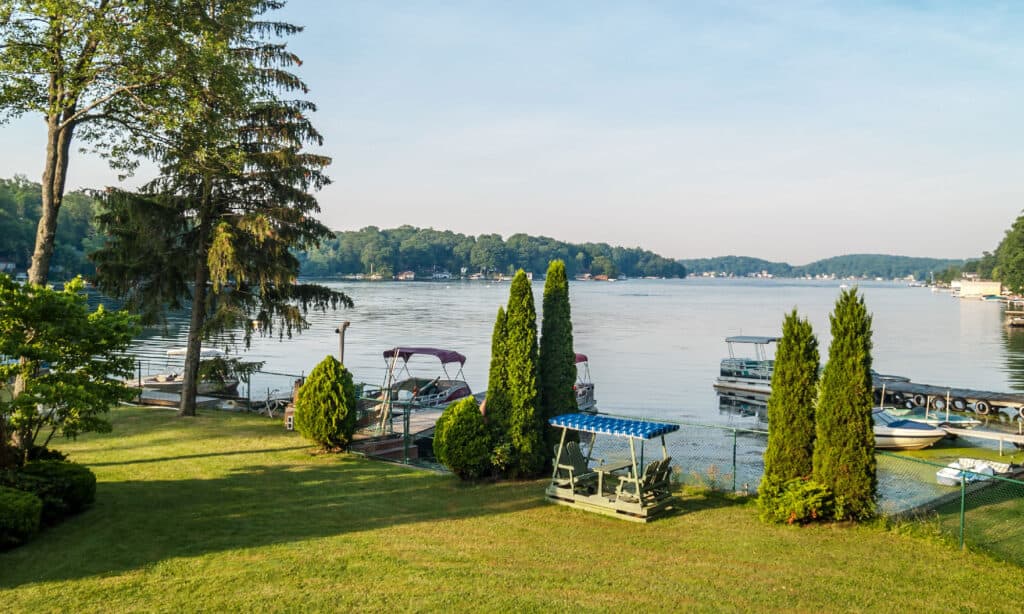New Jersey is known for a lot of things. Porkroll? Check. Gorgeous beaches and expansive boardwalks? Check. Diverse landscapes and wildlife? Check. But volcanoes? Well, actually, yes — check.
Did you know New Jersey is home to a volcano? That’s right: the Garden State has its very own (very dormant) volcano in Sussex County. The Beemerville Volcano, which is also called Rutan Hill, has no crater. However, it does consist of eroded remains over 1,500 feet in diameter.
You’d expect to find volcanoes in Alaska and Hawaii (both of which are home to active volcanoes), but a northeastern state in the U.S. is not a likely location. But while New Jersey does have its own volcano, there isn’t much evidence that it ever really existed in the first place.
This New Jersey volcano was not deadly, but it did boast volcanic activity over 420 million years ago. Over a century ago, the volcanic vent was discovered on private property in Northwest New Jersey. To this day, however, many of the state’s residents don’t even know the volcano once existed (including me, who has spent all my 28 years in the state!) Even when you actively look for it, it’s hard to tell it was ever there. Still, the knowledge alone is shocking and intriguing.
Keep reading to learn more about the unexpected volcano and its surprising homeland.
Where Is New Jersey’s Volcano Located?
New Jersey’s volcano is located in Colesville, New Jersey — part of Sussex County. Beemerville Volcano no longer resembles an actual volcano, but it once operated as such. Rutan Hill stands at 1,020 feet tall in Northwest New Jersey and has remained dormant for over 400 million years. It now consists of neighborhoods and mostly real estate, but its history remains a state-wide wonder.
The Beemerville Volcano took form after a major explosion 440 million years ago. Leading up to the eruption, gases, and magma bubbled miles beneath Earth’s surface. This caused the ground to crack and explode when it met cold water. The volcano spewed lava flows that were hundreds of feet thick. All that was left after the explosion was a deep hole in the ground on the tall mountain.
Rutan Hill, which is also known as Volcanic Hill, is a part of the Late Ordovician Beemerville Alkaline Complex. Erosion has eliminated evidence of the volcanic cone and any superficial deposits to this day. Rutan Hill takes form as a diatreme or a pipe-like structure where magma or hot lava once forced its way up explosively. But rest assured, it is no longer in danger of erupting again — and hasn’t been for hundreds of millions of years.

Sussex County, New Jersey borders both Pennsylvania and New York and offers gorgeous natural scenery and abundant wildlife.
©iStock.com/andykazie
Volcanic Activity in New Jersey
While there might not be any volcanic activity in the state of New Jersey anymore, there is still the presence of nepheline syenite at Rutan Hill and throughout the Beemerville Alkaline Complex. In fact, this rare “igneous” rock is only found in three U.S. states: New Jersey, Arkansas, and Texas (and throughout other parts of the world).

Nepheline syenite is a type of plutonic rock. It forms beneath the Earth’s surface and consists of slow cooling and crystallized magma.
©KrimKate/Shutterstock.com
According to a Columbia University professor, there’s a high chance that Rutal Hill wasn’t the only (or even largest) volcano in the state. In fact, many believe there was a much larger volcano that no longer has any remnants.
Unfortunately for residents and tourists, as exciting and unique as this attraction might be, it’s mostly inaccessible to the public. Rutan Hill sits mostly on private property, but you might still be able to see it from High Point State Park’s Appalachian Trail. However, any volcano-like formations have been covered with rock from Kittatinny Mountain. Additionally, it now has a flat-top surface, as its peak flattened from sheets of ice during the Ice Age. Rutan Hill’s expansive landscape made it the perfect location for residential homes and real estate, so there’s not much there to see.
However, many of New Jersey’s beloved animals are abundant in the entirety of Sussex County, so you might get some birdwatching and wildlife spotting in during your trip. From North American black bears and white-tail deer to green frogs and painted turtles, you can find an array of wildlife in the area. Just watch out for ticks!
At the very least, however, you can at least snap a photo of the street name leading to the top of Rutan Hill: Volcanic Hill Road. Still, knowing about its history and what once existed there is enough to make you think twice about the state. What other lesser-known facts are we missing?
The photo featured at the top of this post is © Pung/Shutterstock.com
Thank you for reading! Have some feedback for us? Contact the AZ Animals editorial team.







